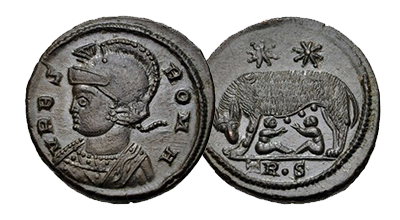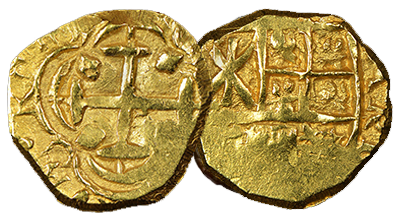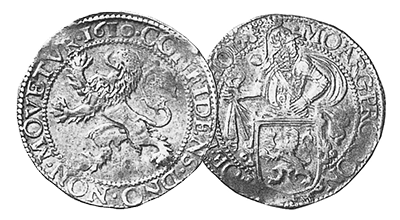Rare Ancient Coins
Ancient Coins are historical currency minted and used in ancient civilizations, such as Greece, Rome, Persia, and China, typically from the 7th century BC to the 5th century AD. Made from materials like gold, silver, and bronze, these coins often feature intricate designs, including portraits of rulers, deities, and symbols of cultural significance. Ancient coins are valued by collectors for their artistic craftsmanship, historical context, and the insight they provide into the economies and societies of past civilizations.
The ancient era, stretching back from Babylon to Ancient Rome and beyond, saw millions of coins minted, though many have been lost and may never be found. Here’s a review of the rare ancient coins for sale. This meticulously curated collection offers coin collectors the opportunity to own a piece of the past, with coins that tell the stories of ancient empires, legendary battles, and the everyday lives of people from bygone eras. From the artistic masterpieces of Greek city-states to the vast expanse of the Roman Empire, from the mysteries of shipwreck coins to the sacred tokens of biblical times, each coin is a portal to another age.
What Is Considered an Ancient Coin?
Generally, “ancient” coins are those considered to have been minted before 500 AD. This includes coinage minted during the time of Alexander the Great to the Roman Empire and later.
The Roman Empire’s Silver Denarius and Other Ancient Roman Coins
Early in the Roman Empire, bronze coins were the most common. Bronze coinage like Constantine Bronzes paid tribute to Constantine the Great.
One of the most popular ancient coins for sale is the Denarius, minted in the Roman Empire and often made of 85% silver. Other popular Ancient Roman coins include the Aureus Denarius, made of gold, and Honorius gold coins (which weigh around 4.5 grams each).
The Alexander the Great Silver Coin and Other Ancient Greek Coins
Alexander the Great’s empire stretched from Greece into Europe and Asia. Many silver coins were minted with the likeness of Alexander as he built a commercial system that would last for thousands of years beyond his death. Ancient Greek coins like the drachm, gold stater, and Athenian Owl Tetradrachm are popular pursuits for coin collectors.
Byzantine Coins From 300-1400 AD
The Byzantine Empire originated in 476 A.D after the Roman Empire fell. Coins from the Byzantine Empire were minted from 300 A.D. to 1400 A.D. and include gold coins, silver coins, and more, many of which have beautiful and religiously-inspired designs on their faces.
Rare Coins Featuring Augustus and More
Interestingly, the first coin featuring a living person would wear the likeness of Roman Emperor Julius Caesar. Men weren’t the only political figures to be featured prominently on coins; women like Fulvia (wife to Emperor Marcus Aurelius) and Cleopatra were also immortalized. Other famous Roman Imperial coins include those honoring Caracalla, Trajan, and Nero.
The coin of Augustus, the first Roman Emperor after the fall of the Roman Republic, is not only on a coin but introduced coinage reform himself. He was behind the minting of the gold aureus and the silver denarius.
Ancient Coin Listings from Ancient Greece, Rome, and Beyond
The study of numismatics includes coins, banknotes, and medals. And while we love all of these, ancient coins have a special place in our hearts: Ancient coins are unparalleled in their variety and historical beauty.
Rare Greek Coins
Dive into the world of ancient Greece, where each city-state minted its own currency, featuring designs that celebrated local deities, heroes, and symbols. Greek coins are renowned for their beauty and craftsmanship, offering a glimpse into the culture, religion, and politics of the classical world. Collectors can find pieces ranging from the archaic period through the Hellenistic era, each telling a unique story of ancient art and society.
Rare Roman Coins
Explore the might and majesty of Rome through its currency, with coins that span the Republic, the tumultuous era of the Twelve Caesars, and the vast reaches of the Empire. Roman coins are not just currency but historical documents that bear the portraits of emperors and empresses, commemorate significant events, and illustrate the gods and goddesses that populated Roman religion and mythology.
Rare Shipwreck Coins
For those fascinated by the tales of lost treasures and the mysteries of the deep, our collection of shipwreck coins offers a tangible connection to maritime history. These coins, recovered from ancient shipwrecks, carry with them stories of trade, exploration, and adventure on the high seas, often showing signs of their time underwater. Each piece is a survivor of history, bearing marks of its journey through time.
Rare Biblical Coins
Biblical coins provide a direct link to the lands and peoples of the Bible, offering numismatic evidence of the stories and figures that have shaped religious history. From Judean coins bearing the names of biblical kings to Roman issues from the time of Jesus, these coins serve as powerful reminders of the historical context of sacred texts.
Collecting Ancient Coins
Don’t let the hunt for rare ancient coins for sale prevent you from completing your collection. Check out Bullion Shark’s ancient coin listings from Ancient Greece, Rome, and other countries today!
FAQ
-
What are rare ancient coins? Rare ancient coins are numismatic pieces that were minted and circulated in ancient civilizations, including but not limited to Greek, Roman, Byzantine, and Persian empires. These coins are considered rare due to their historical significance, age, condition, or limited quantity.
-
Why are ancient coins important to history? Ancient coins are crucial to understanding history because they offer direct insights into the economic, political, and social aspects of ancient civilizations. They can reveal information about trade routes, political regimes, religious practices, and artistic achievements of the time they were minted.
-
How can you tell if an ancient coin is authentic? Authenticating an ancient coin typically involves examining its weight, metal composition, strike patterns, wear patterns, and stylistic details. Consulting with a professional numismatist or submitting the coin to a reputable grading service can also help determine its authenticity.
-
What makes an ancient coin valuable? The value of an ancient coin is determined by several factors, including its rarity, historical significance, condition (or grade), demand among collectors, and sometimes its provenance. Coins with well-preserved details, from significant historical periods or events, or those that are rare specimens tend to be more valuable.
-
Where can you find rare ancient coins? Rare ancient coins can be found through reputable coin dealers, auctions, numismatic shows, and sometimes in online marketplaces. It's important to purchase from reputable sources to avoid counterfeits and ensure the coin's authenticity and legal provenance.
-
Are there any legal considerations when collecting ancient coins? Yes, there are legal considerations, especially concerning the provenance of ancient coins. Laws regarding cultural heritage and the import and export of ancient artifacts vary by country. Collectors should ensure that their coins have been legally acquired and comply with any relevant laws and regulations.
-
How do you preserve and store ancient coins? Preserving and storing ancient coins involves protecting them from environmental damage. This can include storing them in acid-free holders, maintaining stable temperature and humidity levels, and avoiding handling the coins directly to prevent damage from oils and acids in the skin.
-
Can you clean ancient coins? Cleaning ancient coins is generally discouraged, especially for novices, as improper cleaning can significantly reduce a coin's value and historical integrity. If cleaning is necessary, it should be done by professionals who specialize in conserving ancient numismatic items.
-
What is the oldest ancient coin? The oldest known ancient coins were minted in the Kingdom of Lydia (in modern-day Turkey) around the 7th century BCE. These coins were made from electrum, a natural alloy of gold and silver, and marked the beginning of coined money as a medium of exchange.
-
How do you start collecting ancient coins? Starting an ancient coin collection involves researching and focusing on a specific area or period that interests you, such as Roman Imperial coins or Greek city-states coins. Beginners should educate themselves on ancient numismatics, connect with experienced collectors and dealers, and start with more common and less expensive pieces before gradually acquiring rarer and more valuable coins.
Learn more about el cazador, 1915 wheat penny value, 1914 wheat penny value, state quarters, which quarters are worth money, how many nickels in a roll, 1953 wheat penny value, quarters worth money, pennies worth money, 1942 penny value, what are nickels made of, most valuable quarters, 1945 wheat penny value, Morgan silver dollars, silver American eagles, Franklin half dollars.







